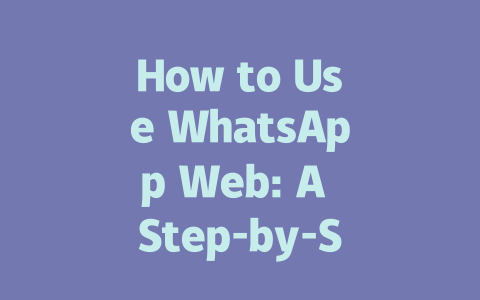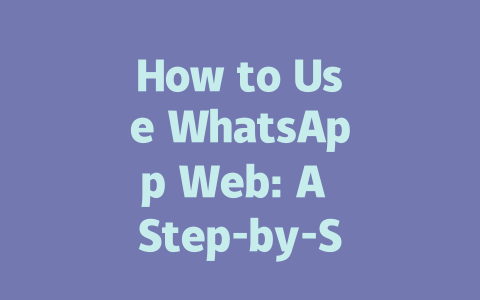Step One: Choosing Topics That Get Noticed
Let’s start with picking topics. Think about this: What do you type into Google when you’re looking for answers? It’s rarely complicated jargon—it’s simple questions like “how to fix a leaky faucet” or “best workout for busy moms.” When brainstorming ideas, focus on what your audience would naturally search for. For instance, last year, I worked with a friend who runs a travel blog. Her posts were descriptive but vague titles like “Exploring Europe’s Hidden Gems” weren’t cutting it. Once we switched to something more specific—like “Top 5 Budget-Friendly Cities in Europe”—her click-through rate jumped significantly within just two months!
Why does specificity matter so much? Because Google’s search robots look at keywords in titles first to determine if the page matches what someone typed in. So instead of aiming for generic phrases, think about solving problems directly tied to those terms. And don’t forget—long-tail keywords (phrases with three or more words) often perform better because they reflect actual user queries.
How Specificity Builds Authority
When users land on your site and see exactly what they searched for, they stick around longer. This behavior tells Google your site is valuable, boosting its ranking over time. A great example comes from Moz, which notes that high-quality content keeps readers engaged, signaling trustworthiness to search engines.
Here are some tips for selecting winning topics:
Step Two: Crafting Titles That Pull Readers In
Now let’s talk about writing irresistible titles. Your headline is the first impression potential visitors get, so make it count! Here’s my go-to formula: Place the most important keyword near the front while clearly stating the benefit. Take this example: “Boost Your Energy Levels Naturally: 7 Science-Backed Tips.” Not only does it highlight energy as the main topic, but it also promises actionable advice backed by science.
But why does placement matter? Well, remember how I mentioned Google’s robots check titles early on? They prioritize relevance based on where keywords appear. Placing them upfront makes it crystal clear what the article covers.
Another tip? Make sure your tone aligns with your audience. Are you speaking to professionals or casual internet surfers? Adjust accordingly. For instance, if running a tech blog, “How to Secure Your Online Data From Hackers” sounds serious yet approachable compared to “An Advanced Guide to Cybersecurity Protocols.”
Adding Visual Appeal Through Formatting
Sometimes formatting helps reinforce messages. Consider using subheadings, bullet points, or even short tables to break down complex info. Below is a quick sample showing how organizing data visually enhances readability:
| Topic | Key Benefit | Target Audience |
|---|---|---|
| Cooking Made Simple | Quick recipes anyone can follow | Beginner cooks |
| Fitness Routines | Workouts tailored to different schedules | Busy individuals |
This table format not only organizes information neatly but also ensures each piece contributes meaningfully to understanding the bigger picture.
Step Three: Writing Content That Resonates With Both Humans and Robots
Finally, once you’ve nailed the title, shift focus toward crafting engaging body content. Structure matters here—break things into digestible sections using headings and paragraphs. Remember, Google loves when content flows logically. One trick I use is imagining the conversation between me and the reader. Suppose I’m explaining how to declutter a home office. Instead of jumping straight into steps, I might say:
“Ever walked into your workspace and felt overwhelmed? Let’s tackle this together step-by-step…”
By framing instructions conversationally, readers feel guided rather than lectured. Another aspect involves weaving in secondary keywords naturally throughout the text. Say your primary keyword is “healthy eating habits.” Secondary ones could include “nutrition,” “meal prep,” or “balanced diet.” Just ensure mentions feel organic—not forced.
Also, always test clarity after finishing drafts. Read aloud or pretend you’re explaining concepts to someone unfamiliar with the subject. If certain parts confuse you, chances are high others will struggle too.
Lastly, never underestimate the power of verification. Tools like Google Search Console (linked with nofollow tag) allow checking performance metrics such as clicks versus impressions. Seeing firsthand whether adjustments improve visibility motivates continuous improvement.
So there you have it—my method for ensuring content stands out online. Give these strategies a shot and share your outcomes. Hearing success stories energizes me to keep refining approaches!
If you’re wondering whether WhatsApp Web can work without your phone nearby, the simple truth is that it just won’t happen. Think of WhatsApp Web as a remote control for your mobile app—it needs your phone to stay online and connected to the internet to function properly. This means even if you’re typing messages on your computer, behind the scenes, your phone is doing all the heavy lifting. It’s not just about sending messages either; receiving them also depends entirely on your phone being powered on and within range of a solid connection.
When it comes to security, rest assured that WhatsApp Web has got your back with end-to-end encryption. That fancy term essentially means only you and the person you’re chatting with can access what’s being said—no one else, not even WhatsApp itself, can peek in. But here’s the thing: while the platform does its best to keep things safe, sharing extremely sensitive stuff like passwords or confidential documents still calls for extra care. After all, no matter how secure a tool claims to be, human error or unexpected breaches can always slip through the cracks. Plus, staying signed in too long, say 5-12 days, might leave some people feeling uneasy, so periodically rechecking your connection isn’t a bad idea either.
# Frequently Asked Questions (FAQ)
#
Can I use WhatsApp Web without connecting to my phone?
No, WhatsApp Web requires your phone to be connected to the internet and paired with the desktop app. The web version functions as an extension of your mobile app, so it cannot operate independently.
#
Is WhatsApp Web secure for sharing sensitive information?
Yes, WhatsApp Web uses end-to-end encryption, ensuring that only you and the recipient can read messages. However, always exercise caution when sharing highly sensitive information over any digital platform.
#
What are the system requirements for using WhatsApp Web in 2025?
WhatsApp Web works on most modern browsers, including Chrome, Firefox, Safari, and Edge. For optimal performance, ensure your browser is updated to the latest version. Additionally, a stable internet connection is required for seamless communication.
#
How long can I stay signed into WhatsApp Web before needing to reconnect?
The duration depends on various factors, such as device activity and server updates. Typically, you can stay connected for 5-12 days if your phone remains active and online. After this period, reconnection may be necessary.
#
Can I use WhatsApp Web on multiple devices simultaneously?
Currently, WhatsApp Web supports up to four simultaneous sessions across different devices. Make sure your phone’s storage and battery can handle multiple connections for extended periods.




